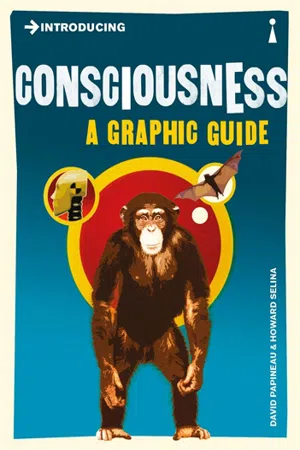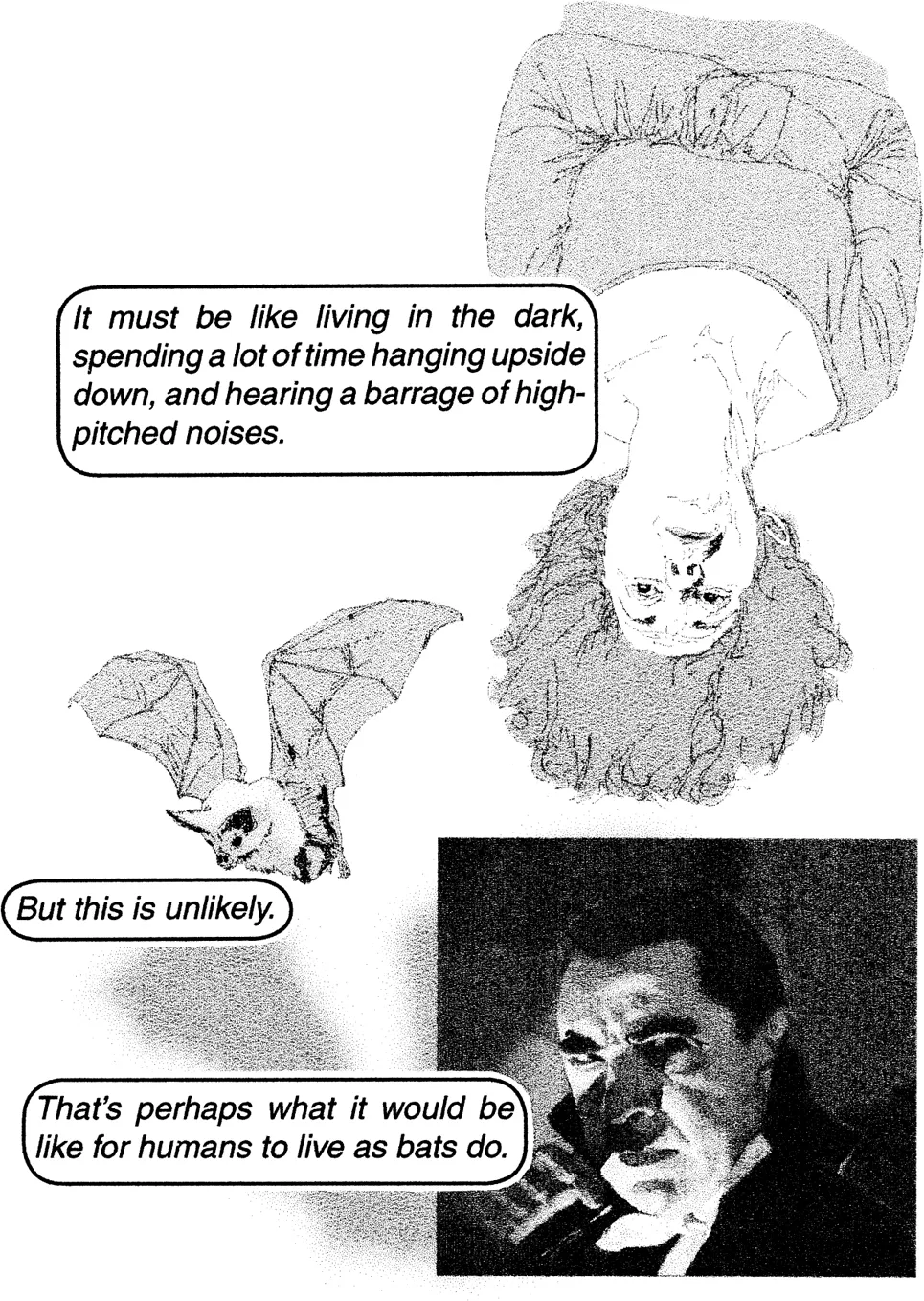
eBook - ePub
Introducing Consciousness
A Graphic Guide
David Papineau,Howard Selina
This is a test
- 176 pagine
- English
- ePUB (disponibile sull'app)
- Disponibile su iOS e Android
eBook - ePub
Introducing Consciousness
A Graphic Guide
David Papineau,Howard Selina
Dettagli del libro
Anteprima del libro
Indice dei contenuti
Citazioni
Informazioni sul libro
'An excellent book' - Ted Honderich, Emeritus Professor of Philosophy of Mind and Logic at University College London (UCL)
Introducing Consciousness provides a comprehensive guide to the current state of consciousness studies. It starts with the history of the philosophical relation between mind and matter, and proceeds to scientific attempts to explain consciousness in terms of neural mechanisms, cerebral computation and quantum mechanics. Along the way, readers will be introduced to zombies and Chinese Rooms, ghosts in machines and Erwin Schrodinger's cat.
Domande frequenti
Come faccio ad annullare l'abbonamento?
È semplicissimo: basta accedere alla sezione Account nelle Impostazioni e cliccare su "Annulla abbonamento". Dopo la cancellazione, l'abbonamento rimarrà attivo per il periodo rimanente già pagato. Per maggiori informazioni, clicca qui
È possibile scaricare libri? Se sì, come?
Al momento è possibile scaricare tramite l'app tutti i nostri libri ePub mobile-friendly. Anche la maggior parte dei nostri PDF è scaricabile e stiamo lavorando per rendere disponibile quanto prima il download di tutti gli altri file. Per maggiori informazioni, clicca qui
Che differenza c'è tra i piani?
Entrambi i piani ti danno accesso illimitato alla libreria e a tutte le funzionalità di Perlego. Le uniche differenze sono il prezzo e il periodo di abbonamento: con il piano annuale risparmierai circa il 30% rispetto a 12 rate con quello mensile.
Cos'è Perlego?
Perlego è un servizio di abbonamento a testi accademici, che ti permette di accedere a un'intera libreria online a un prezzo inferiore rispetto a quello che pagheresti per acquistare un singolo libro al mese. Con oltre 1 milione di testi suddivisi in più di 1.000 categorie, troverai sicuramente ciò che fa per te! Per maggiori informazioni, clicca qui.
Perlego supporta la sintesi vocale?
Cerca l'icona Sintesi vocale nel prossimo libro che leggerai per verificare se è possibile riprodurre l'audio. Questo strumento permette di leggere il testo a voce alta, evidenziandolo man mano che la lettura procede. Puoi aumentare o diminuire la velocità della sintesi vocale, oppure sospendere la riproduzione. Per maggiori informazioni, clicca qui.
Introducing Consciousness è disponibile online in formato PDF/ePub?
Sì, puoi accedere a Introducing Consciousness di David Papineau,Howard Selina in formato PDF e/o ePub, così come ad altri libri molto apprezzati nelle sezioni relative a Philosophie e Esprit et corps en philosophie. Scopri oltre 1 milione di libri disponibili nel nostro catalogo.
Informazioni
Argomento
PhilosophieCategoria
Esprit et corps en philosophieWhat is Consciousness?
The best way to begin is with examples rather than definitions.
Imagine the difference between having a tooth drilled without a local anaesthetic…

The difference is that the anaesthetic removes the conscious pain… Assuming the anaesthetic works!
Again, think of the difference between having your eyes open and having them shut…
When you shut your eyes, what disappears is your conscious visual experience.
Sometimes consciousness is explained as the difference between being awake and being asleep. But this is not quite right.

Dreams are conscious too.
Dreams are sequences of conscious experiences, even if these experiences are normally less coherent than waking experiences.
Indeed, dream experiences, especially in nightmares or fantasies, can consciously be very intense, despite their lack of coherence – or sometimes because of this lack.

Consciousness is what we lose when we fall into a dreamless sleep or undergo a total anaesthetic.
The Indefinability of Consciousness
The reason for starting with examples rather than definitions is that no objective, scientific definition seems able to capture the essence of consciousness.
For example, suppose we try to define consciousness in terms of some characteristic psychological role that all conscious states play – in influencing decisions, perhaps, or in conveying information about our surroundings.

Or we might try to pick out conscious states directly in physical terms, as involving the presence of certain kinds of chemicals in the brain, say.
Any such attempted objective definition seems to leave out the essential ingredient. Such definitions fail to explain why conscious states feel a certain way.

Couldn’t we in principle build a robot which satisfied any such scientific definition, but which had no real feelings?
Imagine a computer-brained robot whose internal states register “information” about the world and influence the robot’s “decisions”. Such design specifications alone don’t seem to guarantee that the robot will have any real feelings.
The lights may be on, but is anyone at home?
The same point applies even if we specify precise chemical and physical ingredients for making the robot.

Why should an android become conscious, just because it is made of one kind of material rather than another?
There is something ineffable about the felt nature of consciousness. We can point to this subjective element with the help of examples. But it seems to escape any attempt at objective definition.
Louis Armstrong (some say it was Fats Waller) was once asked to define jazz.

Man, if you gotta ask, you’re never gonna know. We can say the same about attempts to define consciousness.
What is it Like to be a Bat?
When we talk about conscious mental states, like pains, or visual experiences, or dreams, we often run together subjective and objective conceptions of these states. We don’t stop to specify whether we mean to be talking about the subjective feelings – what it is like to have the experience – or the objective features of psychological role and physical make-up.

It usually doesn’t matter, given that the two sides always go together in humans. If not in robots.
Even so, these two sides can always be distinguished. This is the point of the American philosopher Thomas Nagel’s famous question: “What is it like to be a bat?”
Most bats find their way about by echo-location. They emit bursts of high-pitched sound and use the echoes to figure out the location of physical objects. So the intent of Nagel’s question is: “What is it like for bats to sense objects by echo-location?”

It must be like living in the dark, spending a lot of time hanging upside down, and hearing a barrage of high-pitched noises. But this is unlikely. That’s perhaps what it would be like for humans to live as bats do.
But for bats, to whom echo-location comes naturally, it is presumably not sounds they are aware of, but physical objects – just as vision makes humans aware of physical objects, not light waves.
But still, what is it like for bats to sense physical objects? Do they sense them as being bright or dark or coloured? Or do they rather sense them as having some kind of sonic texture? Do they even sense shapes as we do?
We can’t answer these questions. We don’t have a clue about what it is like to be a bat.

We have no conception of the subjective side of bat experience.
In raising his question, Nagel does not want to suggest that bats lack consciousness. He takes bats to be normal mammals, and as such just as likely to be conscious as cats and dogs. Rather, he wants to force us to distinguish between the two conceptions of conscious experiences, objective and subjective.
When we think about humans, we don’t normally bother about Nagel’s distinction. We usually think of human consciousness simultaneously in subjective and objective terms – both in terms of how it feels and in terms of objectively identifiable goings-on in the brain.
The bats, however, force us to notice the distinction, precisely because we don’t have any subjective grasp of bat sensations, despite having plenty of objective information about them.

Science tells us a great deal about the bat’s brain. But not what it is like to be a bat.
Experience and Scientific Description
Nagel thus identifies something about experience that escapes scientific description. We lack this subjective something with bats, even after knowing everything science can tell us about them.
The moral then applies to conscious experiences in general.

Even though we normally run subjective and objective together, we should never forget that these can be distin...
Indice dei contenuti
- Cover
- Title Page
- Copyright
- Contents
- What is Consciousness?
- Further Reading
- Bibliography
- Index
Stili delle citazioni per Introducing Consciousness
APA 6 Citation
Papineau, D., & Selina, H. (2015). Introducing Consciousness ([edition unavailable]). Icon Books Ltd. Retrieved from https://www.perlego.com/book/569516/introducing-consciousness-a-graphic-guide-pdf (Original work published 2015)
Chicago Citation
Papineau, David, and Howard Selina. (2015) 2015. Introducing Consciousness. [Edition unavailable]. Icon Books Ltd. https://www.perlego.com/book/569516/introducing-consciousness-a-graphic-guide-pdf.
Harvard Citation
Papineau, D. and Selina, H. (2015) Introducing Consciousness. [edition unavailable]. Icon Books Ltd. Available at: https://www.perlego.com/book/569516/introducing-consciousness-a-graphic-guide-pdf (Accessed: 14 October 2022).
MLA 7 Citation
Papineau, David, and Howard Selina. Introducing Consciousness. [edition unavailable]. Icon Books Ltd, 2015. Web. 14 Oct. 2022.